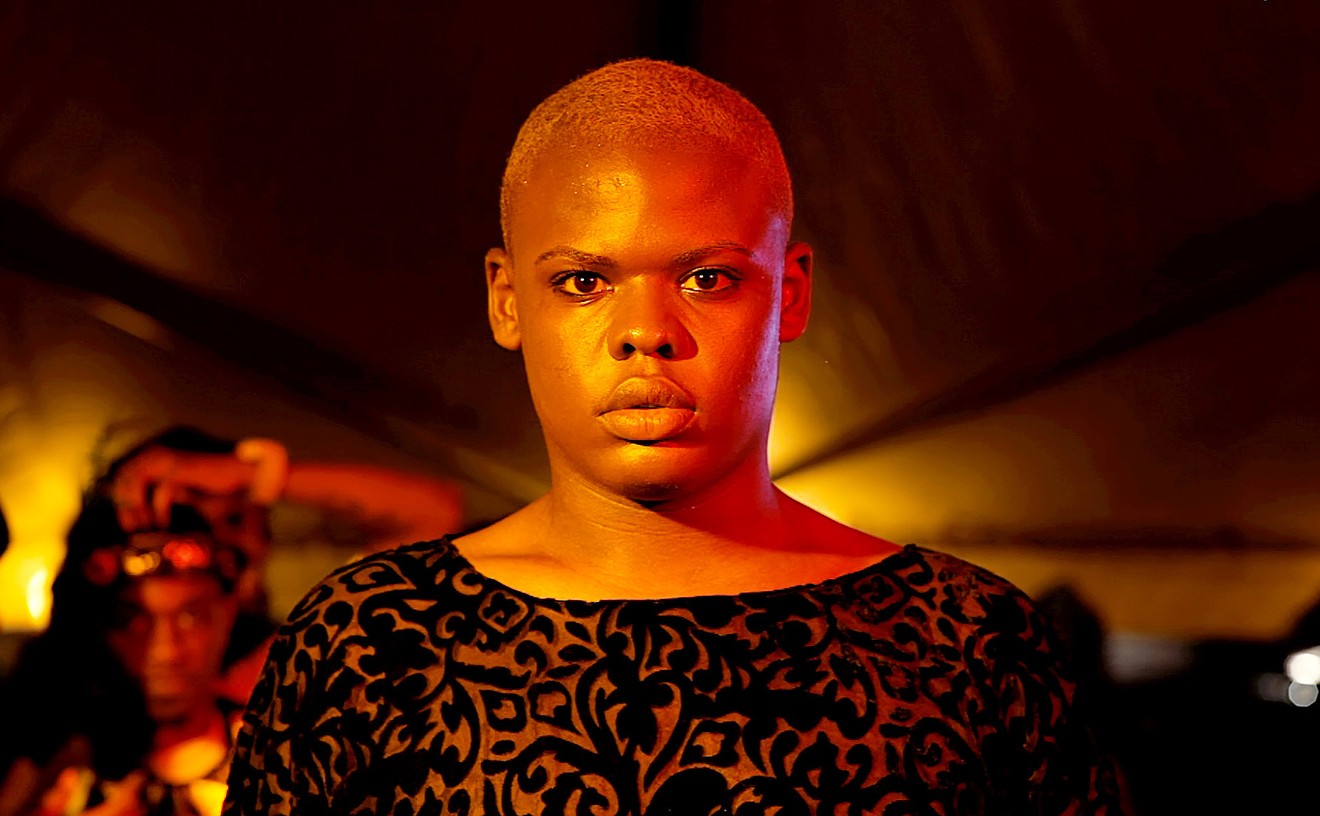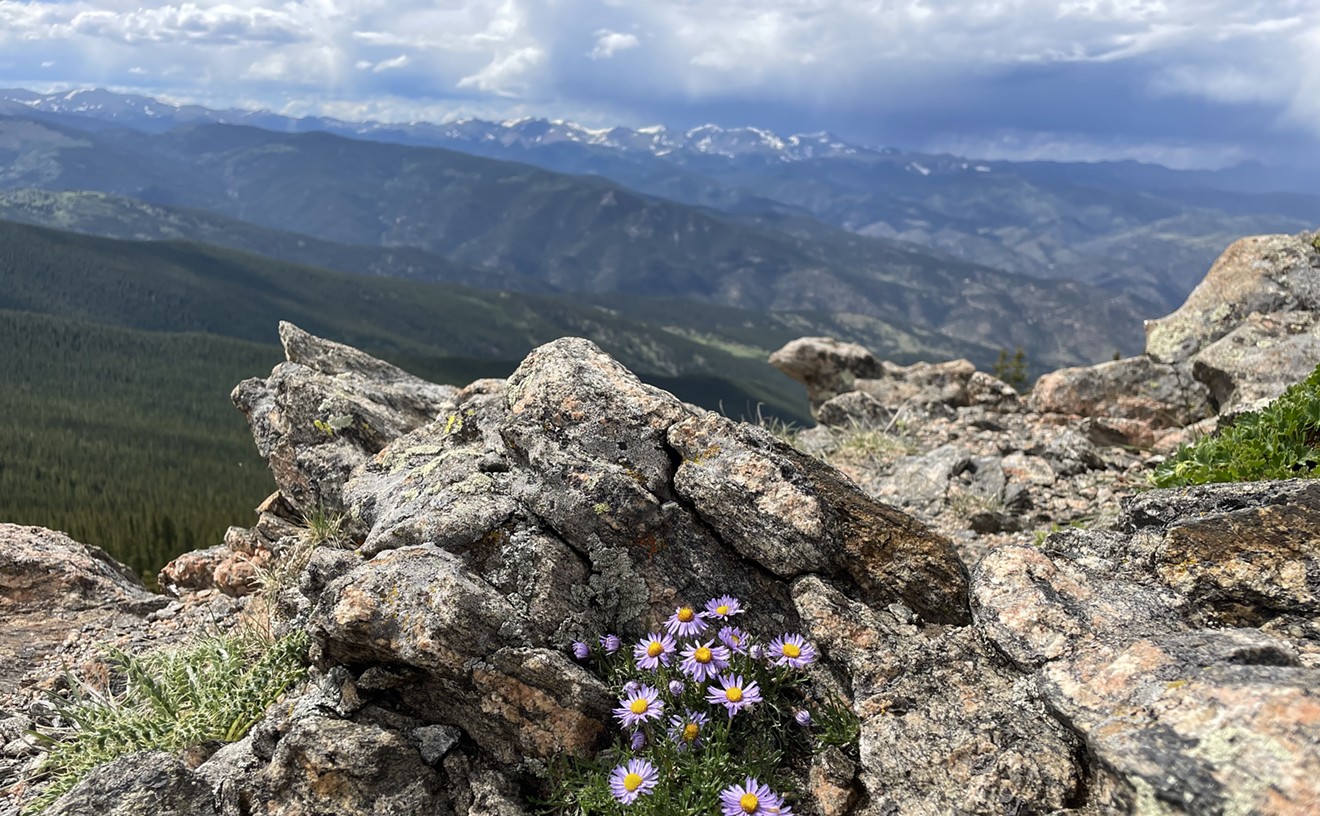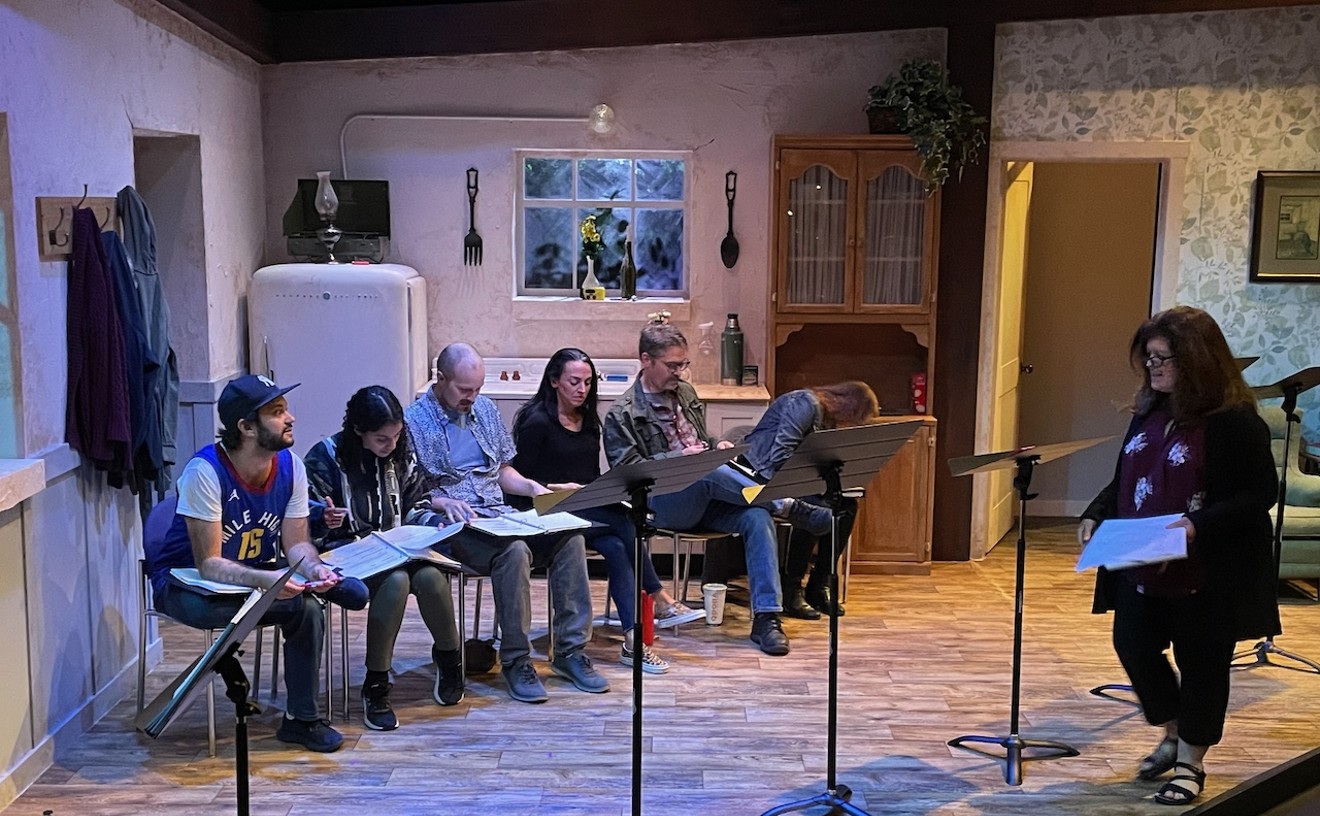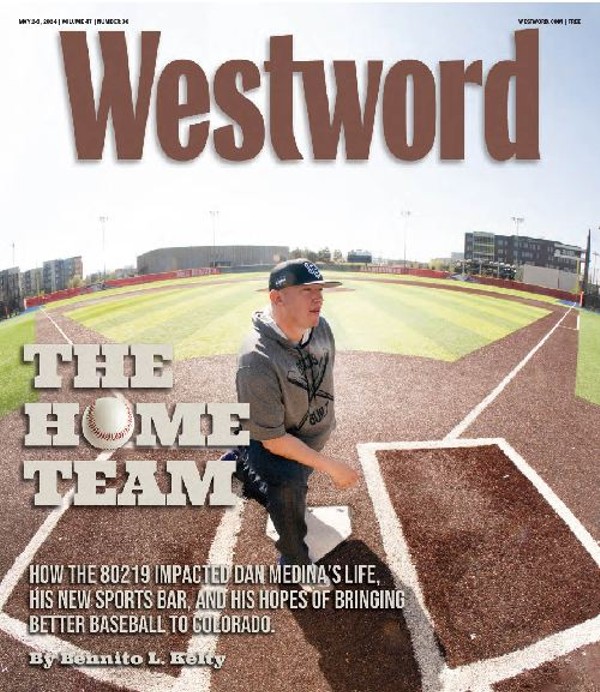For the past several years, a pair of alternating biennials have been presented in the month of March (though the shows and events associated with them often start in February and end in April). In odd-numbered years, there's the well-established Month of Photography, and in even-numbered years, like 2014, there's the still-emergent Month of Printmaking — this year dubbed Mo'Prints.
As with Month of Photography, Month of Printmaking is a loosely associated series of shows and panels presented at galleries and other art venues along the Front Range. It was organized by the Invisible Museum and headed up by Marina Graves and Alicia McKim along with Mark Lunning, printmaster and owner of Open Press. The festivities began on February 28, when Open Press: Celebrating 25 Years of Printmaking — featuring work that Lunning has produced over the years at his Open Press atelier — opened in the McNichols Building in the Civic Center.
Lunning has distinguished himself over the last quarter-century, emerging as one of the most significant printers in the state through Open Press. Having grown up in Westminster, he settled in Denver in the '80s after studying art at the University of Northern Colorado in Greeley. He was exhibiting his work at the venerable but long-gone Inkfish Gallery when, in 1987, the director there, Paul Hughes (now at Z Art Department), commissioned him to do an etching. Lunning was in the same studio building with artist Michael Duffy, who had an etching press. The Hughes commission gave Lunning a chance to sharpen his etching skills, which he had learned in college just a few years earlier.
When Duffy moved back to his home town of Chicago and took the press with him, Lunning was inspired to start Open Press. He had also determined that there was a dearth of local printmakers, and therefore a pent-up demand for such a service. After talking with other artists, Lunning was confident that he could make a go of the print business, so he quit his day job as a land surveyor and put out his shingle on Market Street, in the neighborhood that was not yet called LoDo. This was in January 1989, and his first client was the late Dale Chisman, who had been having his prints done in New Mexico and New York.
There's an interesting six-degrees-of-separation angle to this history, which hit me as Lunning was telling it. Duffy had been a student of Mary Chenoweth, and so, too, had Chisman. Chenoweth first came to Colorado Springs to teach printmaking at the Colorado Springs Fine Arts Center School (though she later moved over to Colorado College, where she encountered Duffy and Chisman). It was at the CSFACS that some of the most significant prints in the history of Colorado had been pulled. That means that in some sense, Open Press is an heir to the main attraction in the history of Colorado printmaking: the prints done from the '30s to the '50s at the CSFACS.
Lunning moved Open Press several times — first to Blake Street, then to Wazee, and finally to the Baker location it has occupied for the past eighteen years. The business has been through tough times as the economy has gone up and down, but Lunning's dedication to his craft and his marvelous skills, both of which inevitably led to the creation of first-rate prints, have allowed Open Press to survive and even prosper. This fact is indisputable as you take in the impressive show on view at the McNichols.
Lunning chose thirty artists who had made deep commitments to Open Press over the years and gave each of them an individual section — sometimes one major print, sometimes a group of them. He also included another twenty artists whose work is represented in various portfolios he organized. In addition to being an artisan who executes the work of others, Lunning is an artist himself and included his own work — notably, the prints from his "Urban Garden" series, in which he combines abstractions of plants with simplified structural forms evocative of buildings.
Given the enormous expanses of the McNichols Building, Lunning chose mostly monumental prints — or those in portfolios that, though small, take on a monumental presence when seen together. As you'd expect, one of the showstoppers is Chisman's "Slip (Yellow Crown)," in which layers of translucent paper have been adhered to the foundation sheet; the imagery includes scribbles, a profile, a paw and a crown.
Although some of the artists who've worked at Open Press have made work that has the "look" of printmaking, with lots of fine parallel lines — like the prints by Brian Comber and Michael Burnett — others have created works that more resemble watercolors. These include the smeary monotype landscape by Joellyn Duesberry and the abstracts by David Yust and Mary Mackey. A couple — Homare Ikeda and Ken Elliot — use printmaking to stand in for painting, and you need to look closely to tell that these works are actually monotypes. The expertly executed woodcuts, which are richly colored, have their own distinctive look. Among them are Randy Hughes's expressive view of aspens and Josh Bales's comix-inspired imagery.
In addition to the stand-alone prints are the portfolios, which are fairly compelling, with a group of diverse artists working according to some theme. Lunning has hung the portfolios as single groupings, with each print framed individually. In "Figures," commissioned by Joshua Hassel, contemporary takes on the figure are carried out by Jill Hadley Hooper, Matt O'Neill, Stephen Batura, Jeff Starr and William Stockman; it's like a snapshot of the art scene in 1996.
In one case, Lunning put together a portfolio titled "Marks on Paper," in which all of the contributing artists have the first name of Mark! In addition to Lunning, other Marks in the group include the late Mark Travis, Mark Dickson, Mark Greg Esser, Mark Friday, Mark Villarreal and Mark Sink. Despite the absurd basis for the connection, the portfolio looks great as a unit.
As I was walking through the exhibit — made up of 125 pieces by 50 different artists — it occurred to me that not only is this presentation an accounting of Lunning's output as a printmaster over the past 25 years, but it also charts the development of contemporary art in greater Denver during the same time span. It's not encyclopedic, certainly, and there are artists from elsewhere, but especially in terms of contemporary painters in the area, it provides a roster that's essentially a who's-who of the scene.
And that's what makes the catalogue, with a foreword by Mary Chandler, a must-have, since every print in the show is included; the slim volume thus serves as a valuable historic document about Denver art.










